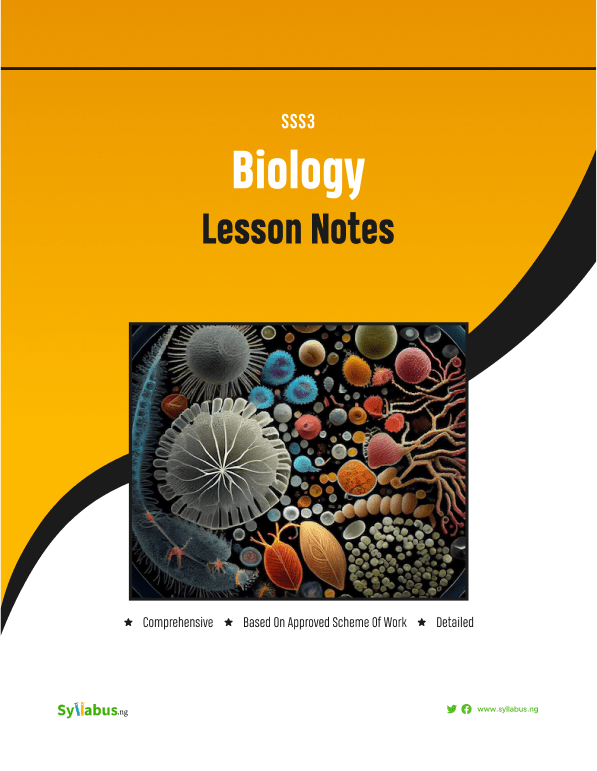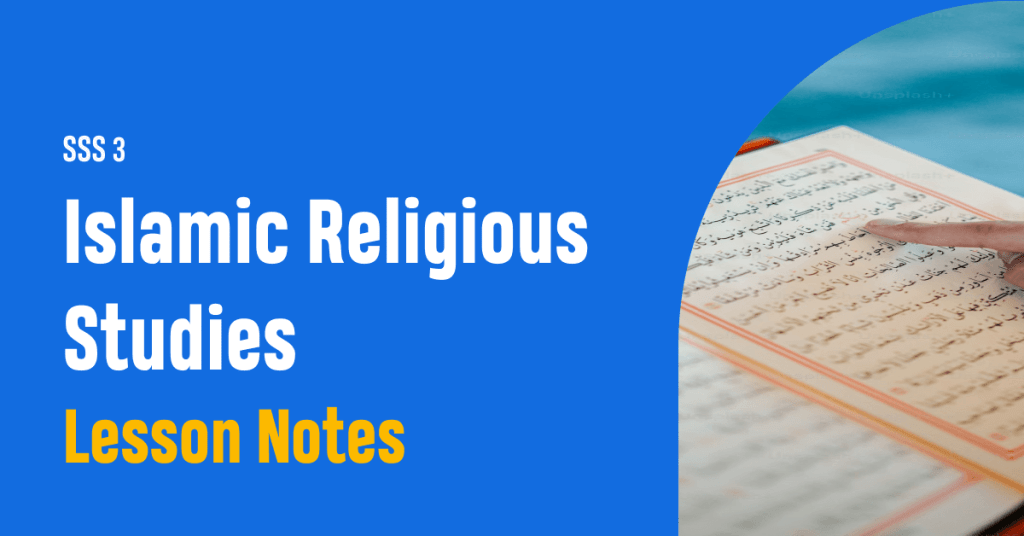SSS3 Biology Scheme of Work
Download the Senior Secondary School 3 (SSS3) Unified Scheme of Work for Biology to serve as a guide for educators

Home » SSS3 Scheme of Work » SSS3 Biology Scheme of Work
Home » SSS3 Scheme of Work » SSS3 Biology Scheme of WorkAbout SSS3 Biology Scheme of Work
Biology, the science of life and living organisms offers deep insights into the natural world and its processes. In this final year of secondary school, SSS3 students learn about the complexities of life at various levels, from molecular biology and genetic inheritance to the principles of evolution and ecosystem dynamics. They also study the intricate systems that sustain human life.
The Lagos State Unified Scheme of Work for SSS3 is thoughtfully structured to provide a thorough understanding of advanced biological topics. This scheme of work covers a broad range of subjects, including genetics, evolution, ecology, and human physiology, all of which are vital for students’ academic growth and practical knowledge.
The Lagos State Unified Scheme of Work places a strong emphasis on practical skills, encouraging students to conduct experiments and make observations, thus fostering scientific thinking and problem-solving abilities.
The significance of SSS3 Biology is immense, particularly in relation to the WASSCE. A solid grasp of this subject is essential for achieving excellent scores in the examination, which is a stepping stone to higher education and numerous career opportunities particularly for students aiming for careers in medicine, nursing, pharmacy, environmental science, biotechnology, and health-related fields
Assessment Guide
SSS3 students in Nigeria are assessed in Biology through continuous assessments and the WASSCE. Continuous assessments include class tests, assignments, oral presentations, projects, and class participation. The WASSCE consists of multiple-choice questions, essays, and practicals. These assessments evaluate a range of skills, ensuring holistic evaluation, skill development, preparation for higher education and careers, and identification of areas for improvement.
Get SSS3 Biology Lesson Notes

Never bother about writing lesson notes again. Get our well written SSS 3 Biology lesson notes for (First, Second & Third Term).
It’s printable, in PDF Format, editable, and easy to use.
SSS3 First Term Scheme of Work for Biology
| LAGOS STATE MINISTRY OF EDUCATION: UNIFIED SCHEMES OF WORK FOR SENIOR SECONDARY SCHOOLS | ||
| Biology Scheme of Work for Senior Secondary Schools 3(SSS3) | ||
| Class | S.S.S 3 | |
| Subject | Biology | |
| Term | First Term | |
| Week | Topic | Breakdown |
| 1 | Regulation of internal environment I | 1. Explain Homeostatic 2. Describe the structure and function of kidney and liver. 3. Name some kidney and liver disease and explain their symptoms and effect 4. identify the treatment of the mentioned kidney and liver diesase |
| 2 | Regulation of internal environment II | 1. Explain what hormones are 2. Name the substances produced by each gland 3. List the glands in the body 4. List some endocrine with their position and their function 5. State the effect of over production or under production of hormones |
| 3 | Regulation of Internal Environment III | 1. I dentify the mammalian skin under the microscope 2. Draw and label main structure of the skin 3. State the functions of the mammalian skin 4. State few ways to care for the skin |
| 4 | Peripheral Nervous System | 1. Identify peripheral nervous system 2. Describe a typical neuron 3. Explain the process of mouse transmission 4. Describe reflex act and reflex action 5. Distinguish between a reflex action and condition reflex |
| 5 | Sense Organ i. Definition and types ii. Organ of smell(nose) iii. Process involve in perception of smell iv. Organ of taste(Tongue) v. Taste duct on tongue and parts played in tasting vi. Skin as a sense organ | 1. Describe sense organ and its major organs 2. Describe organs of smell and taste 3. Identify diffrent part of the tongue associated with sweetness, bitterness, salty and sour taste 4. Name the different parts of sensory and name the stimuli they receive |
| 6 | The Eye | 1. Describe the mammarian eye 2. Explain the mechanism and functions of the eye 3. Describe the various eye defects and connections |
| 7 | MID-TERM BREAK | |
| 8 | The Ear | 1. Describe the structure of the mammalian ear and state the functions of each part 2. Explain the function of the ear as it relates to hearing and maintenance of balance 3. Explain the causes of deafness |
| 9-10 | Genetics | 1. Define genetics and list transmitable characters in plants and animals respectively 2. Describe how chromosommes are involved in the transmission of characteristics from one generation to another 3. Recognise that chromosomes are responsible for inheritted characteristics 4. Define genetics terms i. Genes ii. Alleles iii. Genotype iv. Phynotype v. Dominant and Recessive alleles 5. Explain the part played by Gregor Mendel in Genetics and state Mendelian first and second law |
| 11 | Revision | |
| 12 | Revision | |
| 13 | Examination | |
Get SSS3 Biology Lesson Notes

Never bother about writing lesson notes again. Get our well written SSS 3 Biology lesson notes for (First, Second & Third Term).
It’s printable, in PDF Format, editable, and easy to use.
Get SSS3 Civic Education Lesson Notes

Never bother about writing lesson notes again. Get our well written SSS 3 Civic Education lesson notes for (First, Second & Third Term).
It’s printable, in PDF Format, editable, and easy to use.
SSS3 Second Term Scheme of Work for Biology
Recommended Biology Textbooks for Senior Secondary School 3
The recommended Biology textbooks for SSS3 include but are not limited to the following:
- Classic Practical Biology for Senior Secondary Schools by Nneka N. Ekechukwu – Metropolitan Publishers Ltd SS 1-3
- New Comprehensive Practical Biology with Alternative to Practicals and Specimen questions and answers for West African Senior Secondary schools by Emedo A. B. C et al
Think-Tank Educational Publishers SS 1-3
- New Comprehensive Practical Biology with Alternative to Practicals and Specimen Questions and Answers for West African Senior Secondary Schools by B. C Obidiwe
Mid-Field Publishers Ltd SS 1-3
- Modern Biology for Senior Secondary Schools (Based on the new NERDC, Curriculum for secondary schools) by Lucy .I. Akunwa, J.B.C Obidiwe
Africana First Publishers Plc SS 1-3
- Complete revision Biology for Senior Secondary Schools by Ngozi E. Agbasimalo PhD KAWURIZ AND MANILAS SS 1-3































